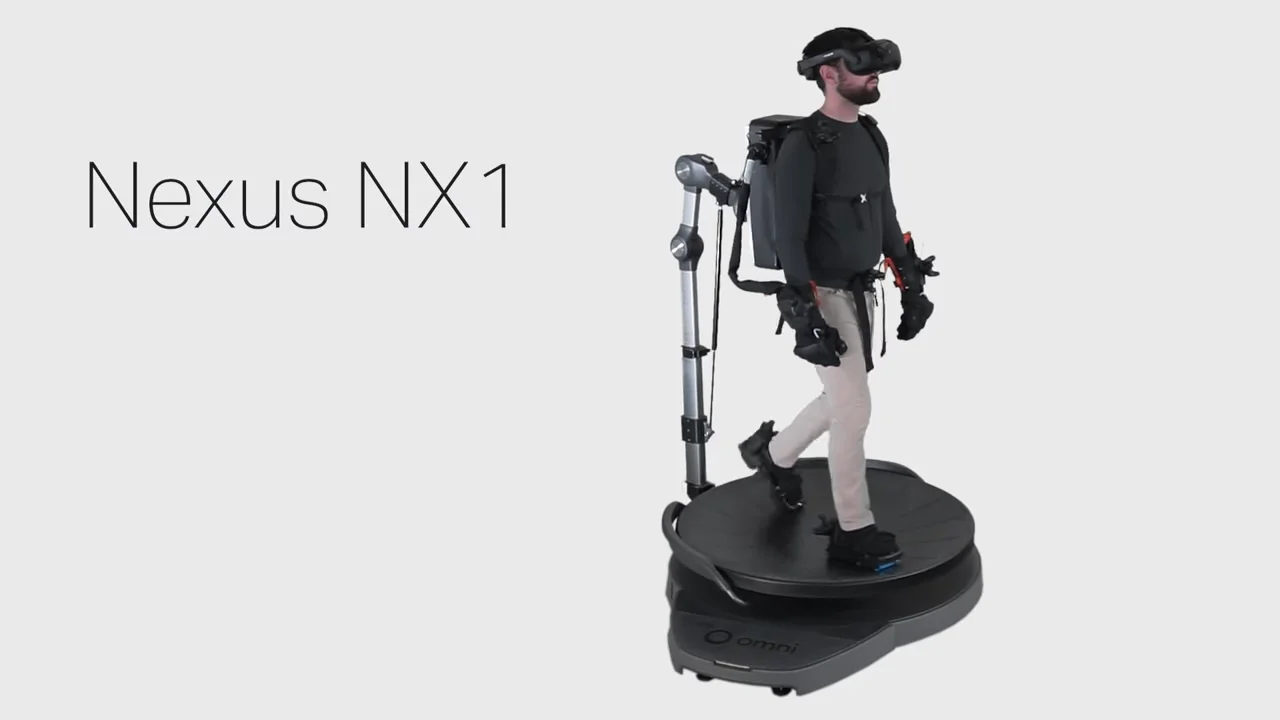- Published on
1HMX Enters the Humanoid Data Race with a High-Fidelity Teleoperation Rig

The race to solve the "physical AI bottleneck" has mostly focused on what robots can see—ingesting massive amounts of video data or tracking human movement through lightweight suits. Today, Idaho-based human-machine interface (HMI) provider 1HMX introduced a new contender that focuses on what the pilot can feel.
1HMX announced the Nexus NX1, a hardware suite that bundles some of the VR industry’s most recognizable high-end peripherals into a single "turnkey" system for humanoid teleoperation. By integrating HaptX gloves, the Virtuix Omni One treadmill, and full-body motion capture, the company is pitching a "heavy" solution to the data collection problem—prioritizing sensory immersion and haptic feedback over the lightweight portability favored by competitors.
The "Frankenstein" Approach to High-Fidelity Data
Unlike Xsens, which recently launched a textile-based motion capture suit focused on comfort and washability, the Nexus NX1 is a rigid, stationary rig designed for maximum data density.
According to the press release, the system is a "unified package" of existing third-party technologies:
- Hands: HaptX Gloves G1, known for providing realistic pneumatic tactile feedback, allowing the user to feel the shape and texture of virtual or remote objects.
- Locomotion: The Virtuix Omni One, a 360-degree treadmill platform that allows users to walk and run in place.
- Feet: Freeaim motorized shoes.
- Tracking: A 72-degree-of-freedom (DoF) body and hand tracking system.
1HMX claims this combination captures "an unprecedented amount of user data," specifically highlighting "sub-millimeter precision," "soft tissue models," and "tactile displacement and pressure data."
Targeting the Teleoperation Strategy
The launch comes at a critical time for the robotics industry. As we recently reported, companies are currently split on how to teach robots to interact with the physical world.
However, current teleoperation methods often lack sensory reciprocity. A human pilot wearing a standard motion capture suit can wave their arms to control a robot, but they generally cannot feel what the robot is crushing in its hand.
By integrating HaptX gloves, 1HMX is betting that the next leap in robotic dexterity requires data on pressure and resistance, not just kinematics. If a robot is to learn the "soft intent" required to handle an egg or fold a towel, the training data likely needs to include the tactile feedback loop that governs human motor control.

Immersion vs. Friction
While the Nexus NX1 offers high-fidelity data, it presents a contrasting philosophy to other recent market entries.
Earlier this month, Xsens launched the "Link" suit, explicitly marketing it as a "frictionless" workflow with washable textiles and hot-swappable batteries. Xsens's approach seems tailored for volume—enabling "arm farms" of workers to perform tasks all day with minimal physical encumbrance.
Similarly, Unitree’s "Embodied Avatar" demonstration showed operators in lightweight straps performing dynamic movements like martial arts and soccer.
In comparison, the Nexus NX1 appears to be a much heavier, more stationary commitment. It forces the operator into a treadmill harness and pneumatic gloves. This suggests the system may be better suited for training specific, high-value complex tasks—such as bomb disposal, medical procedures, or delicate manufacturing assembly—rather than the general-purpose household chores currently being targeted by 1X and Tesla.
Availability
The Nexus NX1 is available for pre-order now, though 1HMX estimates shipment won't begin until Q2 2026.
This timeline is notable in an industry moving at breakneck speed. With companies like 1X soon deploying "Expert Mode" in the field and Unitree demonstrating agile teleoperation today, the Nexus NX1 will need to prove that its high-fidelity haptics offer a data advantage worth the wait and the likely substantial footprint.
For roboticists, however, the arrival of a bundled, "turnkey" haptic rig signals that the hardware ecosystem for training AI is maturing. We are moving beyond simple motion capture and into an era of full sensory digitization.
Share this article
Stay Ahead in Humanoid Robotics
Get the latest developments, breakthroughs, and insights in humanoid robotics — delivered straight to your inbox.